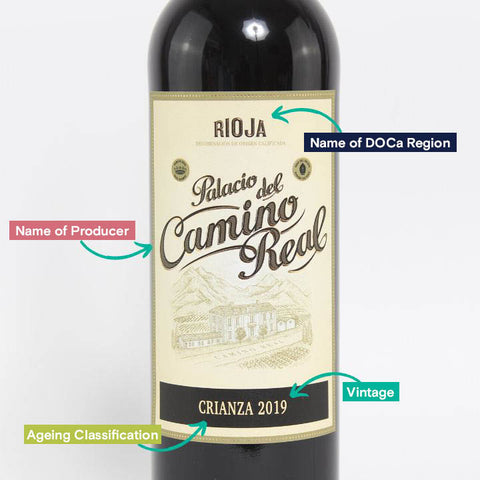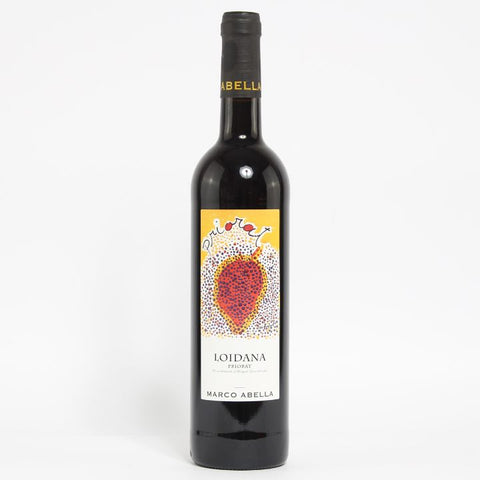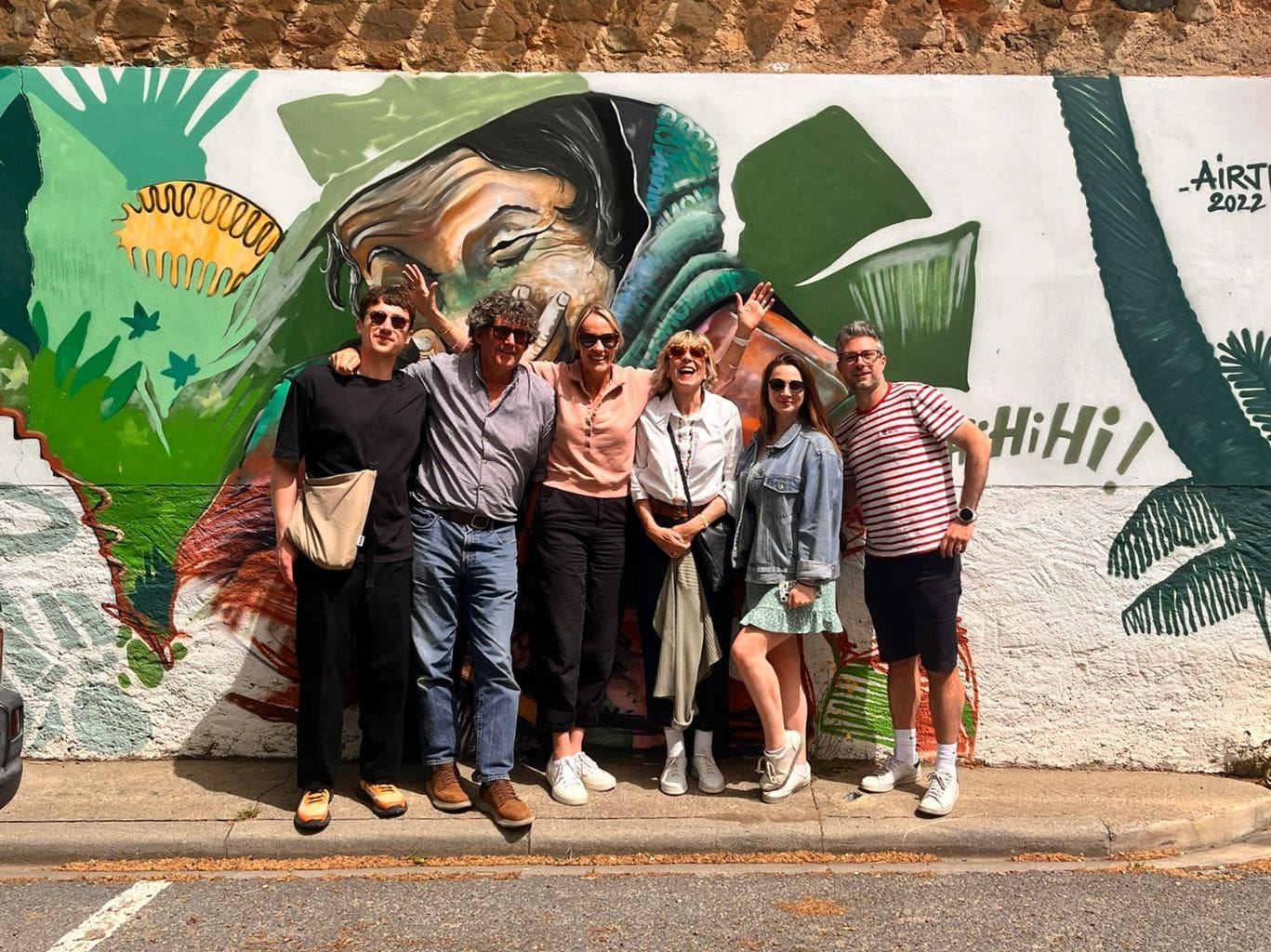Back to School - Wines of Spain
Spain has more vineyards than any other country, yet it doesn't produce the most wine. It is known best for its reds that use Tempranillo grapes and that have been oak aged for some time.
The classification of wine in Spain follows a similar format as those seen in France and Italy, with a few regional variations. These are the terms you'll see on labels.
Denominación de Origen Protegida (DOP) is the highest quality tier of Spanish wine, similar to France's Appellations and Italy's DOC. There are 3 main traditional sub-classifications of DOP:
Vino de Pago (VP) is a single-vineyard wine. Currently, there are 15 Vino de Pagos, mainly in Castilla-La Mancha and Navarra.
Denominación de Origen Calificada (DOCa / DOQ) is a more rigorous quality standard that requires wineries to be located within the region where wines are labelled. Rioja (DOCa) and Priorat (DOQ) are currently the only regions that use this.
Denominación de Origen (DO) is used for quality wines made in one of the 79 official wine regions.
Indicación Geográfica Protegida (IGP) is used here as it is in France and Italy. It covers wines from larger regional areas with slightly lower requirements than DOP. Wines are labelled Indicación Geográfica Protegida or IGP. There are 46 IGPs of Spain, including the largest single Castilla-La Mancha IGP.
We'll look at 4 of the key regions to discover what Spanish wine has to offer.
Rioja
With over 600 wineries, Rioja is home to an incredible diversity of wines. The key grape used is Tempranillo and is the foundation of the region's best wines, offering flavours of raspberry, plum, blackcurrant and cherry fruit and a structure that is very suited to oak ageing. This can be blended with Grenache, which adds body to the blend, along with other local varieties like Graciano.

The other key factor in wines from Rioja is time in oak barrels. The rules around the style and labelling of their wines is based around the minimum amount of time maturing in both barrel and then bottle before release.
There are 4 main styles:
Rioja Genérico - young, fruity wines that have spent less than 1 year in barrels - often no time at all. This is a good way to enjoy the flavours of the Tempranillo grape itself. These wines account for around 40% of Rioja wines and showcase the juicy fruit flavours, with less tannin acidity. They are not suitable for further ageing. These wines were previously labelled Joven (which simply means young) but is no longer used on new bottles of Rioja.
Crianza - wines with this label have to be aged for at least 1 year in oak and for a few months in bottle before being released. Crianza Rioja is more full bodied with notes of vanilla, toast and coffee, blending with the red and black fruits. Wines in this style can be very good value and are often the style people try first when discovering Rioja.
Reserva - to be labelled Reserva the wine must have been aged for at least 3 years, with 1 year minimum in oak barrels and the rest in bottle, although many producers go beyond these minimums. Only the best fruit from the harvest is used in Reserva wines. They show significant signs of aging, with subtle fresh fruit characteristics and more dominant notes of cigar box and dried fruit. Many wine lovers say that this is Rioja's sweet spot between the fruitiness of young Rioja and the oakey mature style of Gran Reserva.
Gran Reserva - Made only in years of exceptional harvest of the best quality fruit, Gran Reserva wines must be a minimum of 5 years old, with 2 years minimum in oak barrels and 3 years in bottle before release. These have the lots more savoury, oaky flavour as the freshness of the fruit fades over time, but they also have the most tannin and are the most suitable for long term ageing. Only 2% of Rioja is Gran Reserva, which along with the additional ageing time makes them more expensive.
Rioja can also be made in white or rosé styles. White Rioja is made primarily with Viura (Macabeo) along with other indigenous grape varieties and is also traditionally aged in oak, although for shorter periods than the reds. They can be very age-worthy though. More and more unoaked examples are now being made as modern drinkers favour fresh, fruity white wine.
Rioja rosé wines are made mostly with Garnacha which offers plenty of juicy strawberry and raspberry fruit. They have previously been only allowed to make in darker shades of pink/red but are now allowed paler shades too.
Key Grape Varieties:
Tempranillo - This grape makes medium to full-bodied wines withflavours of cherry and plum and enough tannin to make them suitable for ageing. They develop aromas of clove and leather and pick up the vanilla notes as they age.
Garnacha (Grenache) -used in Rioja to add a little fruitiness to the wine with juicy strawberry and raspberry flavours.
Viura - this has flavours of honeydew melon, lime peel and fragrant herbal notes like lemon verbena and thyme. With oak ageing it develops flavours of hazelnut.
Where to start: Palacio del Camino Real, Rioja Crianza

This is a crowd pleasing Rioja Crianza with a bit of substance. Made from a blend of Tempranillo, Grenache and Graciano you get complex aromas of ripe dark fruits mixed with coffee and vanilla oak notes. The palate is smooth and fruity, complemented by gentle tannins. Extremely enjoyable and easy to drink.
Castilla Y Leon
A little further South West of Rioja lies another region known for using Tempranillo in oak aged wines. Ribero Del Duero DOP runs intermittently for over 70 miles along the river Duero within Castilla Y Leon. These sprawling lands feature a mix of different soils and some high altitude landscapes.
It is warmer here with baking hot sun in the days and extreme swings of temperature into the night. These conditions are suited to Tempranillo and the fruit grown here makes wines that are big, bold and textured with rich spices, dark fruit and smoky flavours.
Ribera Del Duero uses the same system of Crianza, Reserva and Gran Reserva for its wines but it has one additional label: Cosecha. This is a bit of a catch-all and can mean everything from the youngest wine to the longest-aged, most sophisticated wine, as long as it comes from the Ribera del Duero and meets the minimum standards set by the DOP.
Further west is the DOP Rueda. This area is just as hot as its neighbour, and is a patchwork of vineyards on the flat high plains south of Valladolid, home to a rare indigenous white grape called Verdejo. This grape makes wines that have flavours of peach, grapefruit, lime and honeydew melon and is a great alternative to Sauvignon Blanc. The grapes grow on leafy bush vines low to the ground.
Also notable in Castilla Y Leon is Bierzo, it was accorded DO status in 1989 and in the past few years has experienced a surge in popularity. It has a milder climate than the hotter inland areas and produces reds wines with the Mencia grape that are lighter and more minerally than the big reds of Ribera Del Duero.
Key Grape Varieties:
Tempranillo:
Verdejo: Flavours of peach, grapefruit, lime and honeydew melon and is a great alternative to Sauvignon Blanc.
Mencia: a medium-bodied red wine grape that produces high quality wines with floral and red fruit flavours. Worth trying if you like Pinot Noir or Gamay based wines.
Where to start: Bardos CLEA, Romantica Crianza

Deep cherry red colour with a dark violet edge. Intense and complex aroma of ripe fruits, dark fruits jams, tobacco and leather. Full bodied wine with strong structure and noticeable freshness. Smooth and elegant, complemented with gentle tannins and pleasant finish.
Catalonia
Penedes is where Cava produced. The premier sparkling wine of Spain, Cava is made using the traditional refermentation in the bottle method, much like Champagne. It uses several of Spain’s native grapes including Macabeo (Viura), Xarel-lo, and Parellada. It has flavours of quince, lime, yellow apple, chamomile and almond
Also in Catalonia is Priorat, a tiny, rugged and dry, mountainous region that produces powerful wines reminiscent of southern Rhône Valley blends. The main grapes used in Priorat are Garnacha and Cariñena. These two grape varieties provide the backbone of nearly all Priorat reds and many of the Cariñena bush vines in Priorat are 90-plus years old, which makes for very intensely flavoured mostly red-fruit driven wines. These wines are highly acclaimed and have become rather expensive, but are worth seeking out if you like big red wines.
Key Grape Varieties:
Garnacha (Grenache) -the key grape in Priorat offer flavours of red and black plum and high alcohol and cinnamon spice.
Cariñena (Carignan) - black cherry, cassis, brawny tannins and liquorice.
Macabeo (Viura) -the grape of Cava, along with Xarel-lo and Parrellada.
Where to start: Marco Abella, Loidana Priorat
This wine offers intense aromas of fruits - strawberry, cherry, raspberry and black cherries; with hints of blue flowers, cedar and spices. Smooth and velvety on the palate, it remains harmonious to the finish. Very fresh.
Rias Baixas
Over in northwest Spain, Rías Baixas gained Denominación de Origen status in 1988. It is full of lush, verdant grassy hills and has a misty, drizzly climate. Albariño thrives here as its thick skin can withstand the potential threat of mildew and rot caused by the damp conditions. If you were to visit a vineyard you'd also notice that the vines are trained high up, above head height, on wooden pergolas to encourage air circulation.

The region runs along the Atlantic coast where five Rías (shallow inlets running inland from the ocean) bring in mists and salty sea water which mixes within rocky fjords with freshwater from inland, creating a unique environment.
The area specialises in the Albariño grape. Albariño has mouth-watering acidity and intense stone fruit flavours. It pairs perfectly with seafood - especially something like grilled octopus with freshly squeezed lemon juice and sprinkle of paprika.
Key Grape Varieties:
Albarino - fresh and inviting with notes of lime, grapefruit and nectarine. You might also notice gentle hints of beeswax, melon and honeysuckle too, depending on the wine. It's a good alternative to Sauvignon Blanc or Riesling.
Where to start: Luzada Albariño

Kate Says "Wine made with Albarino is a great alternative to Sauvignon Blanc or dry Riesling. This one from Rias Baixas is a great introduction. Make a big paella and invite some friends over."
How to read a Spanish Wine Label

Wine Myth - Busted
Wine gets better with age.

It's a bit of a cliché that old wine is good wine and we often joke that someone is ageing like a fine wine. But does all wine get better with age?
No, it doesn't. In fact most of it doesn't. The majority of wine produced is made to be enjoyed within a couple of years of the wine being on sale.
We've talked previously about wine is made up of four key components that have to be in balance. These form the structure of the wine and when there is enough of any or all of these the wine has a greater ability to remain in good condition for several years. They prevent the wine from spoiling too quickly.
Most wines are going to spoil within a few years. The bright juicy fruit fades and you are left with any savoury flavours before becoming unpleasant and sour.
A small number of wines will benefit from ageing and will be made with this in mind. They begin as heavily structured wines that evolve into more pleasurable wines over time. Wines like this are often aged before release so they are ready to drink, but can continue to develop with careful cellaring. These include Barolo, some Bordeaux, and Rioja.
So in the case of these wines, is older better? Well, that's a matter of taste.








Leave a comment (all fields required)